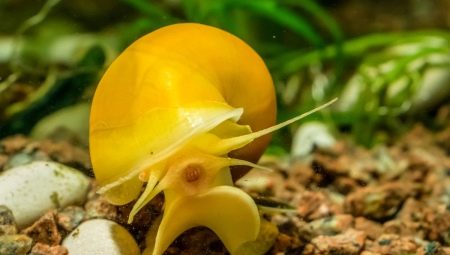The mysterious inhabitant of the reservoirs of South America, the snail ampullarium is familiar to all aquarists. This is an interesting creature whose behavior is very curious to observe. An unusual color of snails will adorn an artificial pond.
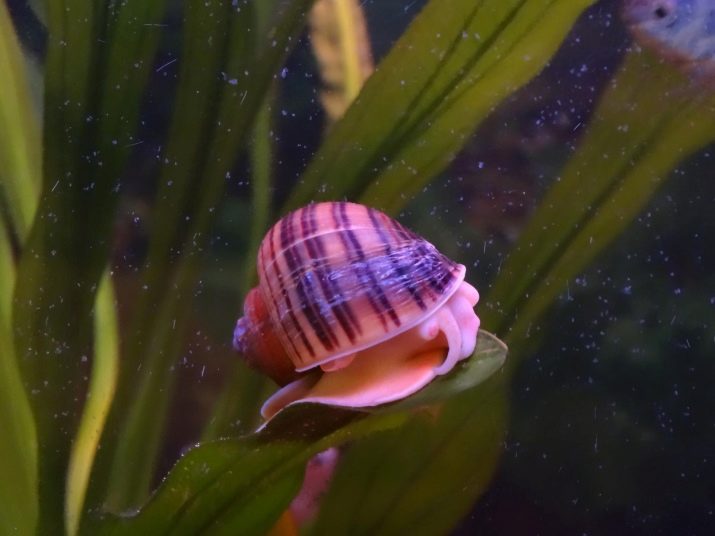
In addition, this creature brings an aquarium ecosystem and considerable benefits.
Description
The carapace of the ampoule has a special cap, which is tightened when a hazard occurs or under adverse conditions. These snails have a non-standard structure of the respiratory system. Gills are located on the right side of the mollusk, and lungs are located on the left. To breathe freely, he needs oxygen, and sometimes he rises to the surface to stock up on air through the breathing tube.
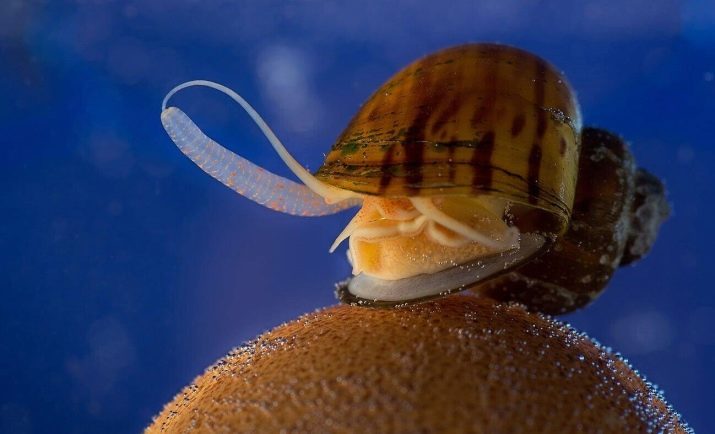
These creatures have a well-developed sense of smell, so they can easily find food in the aquarium. In the area of the head you can see the eyes and four tentacles. In nature, the size of ampoules reaches 11 cm, but in aquarium conditions it is rarely possible to grow a snail larger than 6 cm. The most common color is yellow, but white, blue, purple, cyan, pink, black, and dark red are available in pet stores. Most often, the color ranges from a dark shade to very light.
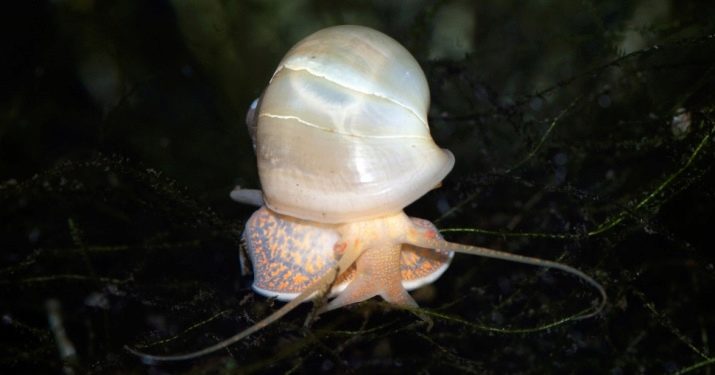
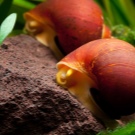
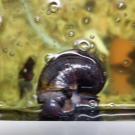
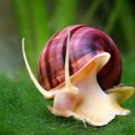
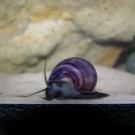
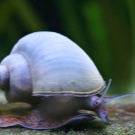
Life span
The average life span of an ampoule is limited to 4 years, but these snails rarely live more than 2 years in an artificial domestic pond. The life span of an ampoule depends on many factors. For example, the health of a snail may be affected by the temperature of the aquarium water. The higher the indicators, the faster metabolic processes occur in the body, and this reduces the life span of a snail. In addition, ampullaria can die and unnatural deaths.

So, they can turn out to be the prey of large fish and predatory mollusks, especially often this phenomenon is observed during the breeding season - young snails often become food for their neighbors in the aquarium.
Finally, the attitude of the owner himself affects the duration of the aquarium life. A sloppy aquarist, transplanting an ampoule, for example, during quarantine or breeding, can take this miniature creature carelessly, crush a sink or drop a snail on the floor. Injuries will shorten the life of a snail. In addition, these mollusks are prone to shoots. Sometimes the escaped snail cannot be found or it is crushed by a door jamb.
In general, ampulariums are rather unpretentious to the conditions of the content of the snail. Even an inexperienced aquarist will be able to follow simple rules for grooming and extend the pet's short age as much as possible.
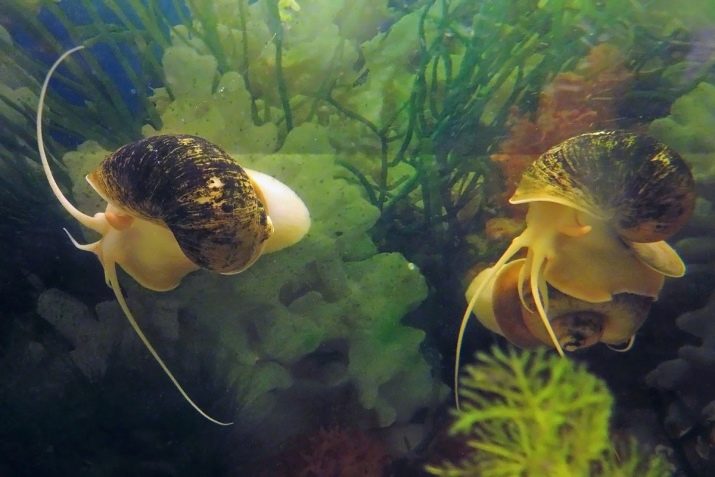
How to determine the gender?
These colored snails do not belong to hermaphrodites, unlike many of their relatives. These are different creatures, but it is not possible to determine the sex of individuals. If an aquarist wants to breed an ampoule, then he needs to get in advance immediately a group of mollusks of 4-6 individuals in order to be able to reduce at least one pair. You can distinguish a female from a male only directly during the breeding period - during mating, the male will always be on top.
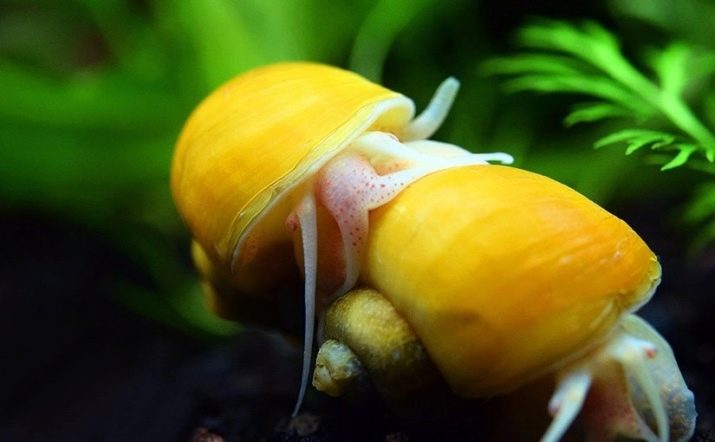
Species overview
Consider the most common varieties of aquariums for aquariums.
- Black. This individual has a black shell, decorated with golden, greenish or multi-colored stains. Quite a rare species that is valuable both for its aesthetic properties and good coexistence with other aquarium inhabitants.
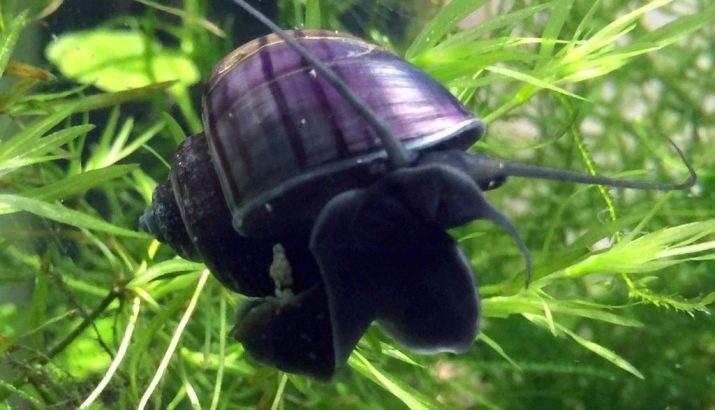
- White. This variety is not distinguished by its peace and friendliness, but it is characterized by a very beautiful appearance - it is the owner of a white shell with golden-red suckers.
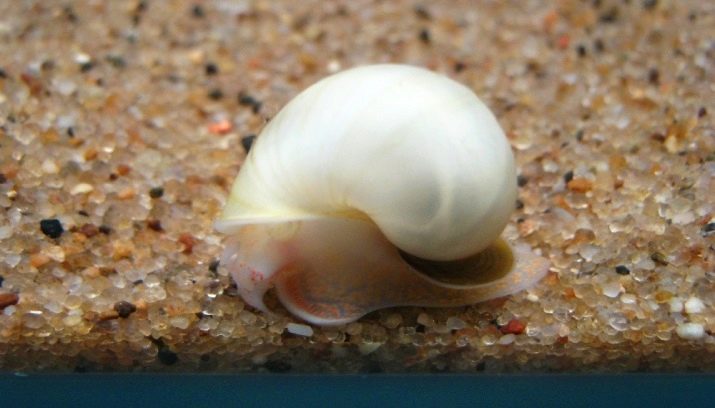
- Blueberry A purple snail that gets along well with most aquatic inhabitants.
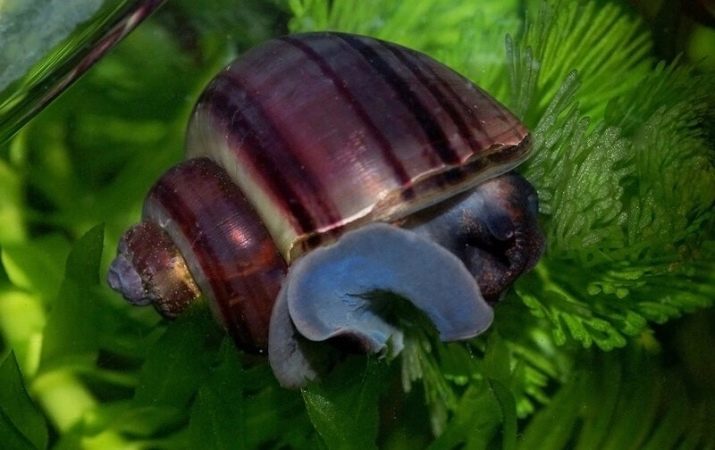
- Yellow. This is the most popular variety. It has a yellow shell and the same brightly colored body. She treats her aquarium neighbors peacefully.
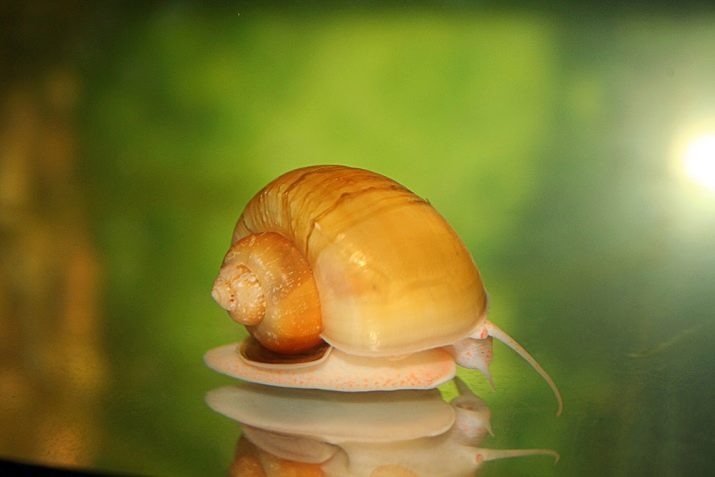
As a rule, the standard size of ampoules rarely exceeds 6 cm, but there is a separate species, the dimensions of which can reach 12–15 cm. Therefore, this variety is called the giant ampoule.
Many aquarists, especially beginners, dream of becoming owners of such a large individual, but the content of such a mollusk is much more complicated than caring for a classic small snail.
Content Rules
Before starting an ampoule, it is worth foreseeing all the risks for the cochlea in advance. For example, many aquarium inhabitants are not averse to feasting on the contents of her shell, others tear off the antennae, and still others swallow the whole snail.
Even small fish with pleasure hunt for caviar and young mollusk. Some aquarists observed a situation where the ampoule itself ate a predator, but the snail cannot attack fish or a large mollusk - it does not have enough strength or energy to do this. And if the owner saw how the ampoule eats up the carcass of the fish, then this fish was already dead, and the snail only regaled its remains.
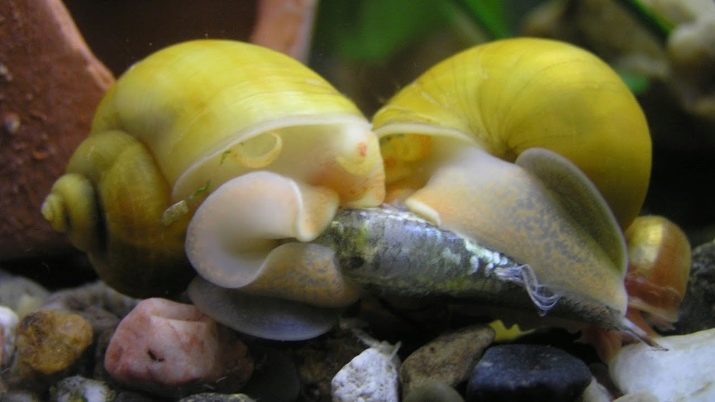
Therefore, for other creatures in the aquarium, ampullariums are most often harmless.
but the mollusk is dangerous for most aquarium plants. These are rather voracious snails, it is better not to plant expensive rare specimens of aquarium flora in their tank.
Better give preference to hard algae, these plants will remain intact, since their structure is too dense for a snail. The artificial reservoir containing ampullarium should be equipped with filtration and aeration systems.And also do not forget to clean these filters and once a week to replace 30% of the volume of the aquarium, filling in with fresh water that has settled for a day.


In general, a small 10-liter capacity is suitable for ampoule, but for the black variety it is recommended to buy an aquarium with a volume of 40 liters or more. These mollusks are not picky about water quality. Health problems can cause only increased levels of softness of water. The temperature favorable for them is about +24 degrees. Do not forget clean siphon regularlysince these snails eat a lot and leave a lot of waste.
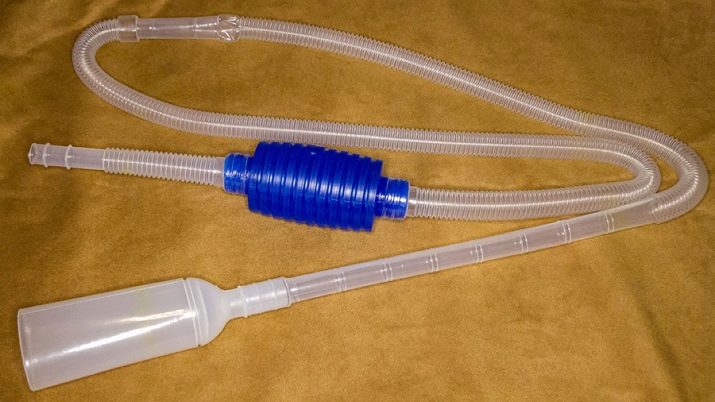
What to feed?
These are omnivorous snails. In the natural environment, they rely more on plant foods, and in aquarium conditions they prefer to eat food that their fish neighbors have not eaten. Actually, this is the great benefit of ampullarium. This snail belongs to cleaners. Due to the small size, she will not be able to cope with the large amount of waste left, but still have a beneficial effect on the cleanliness of the aquarium.
Because of their natural slowness, mollusks do not always have time to eat half-eaten fish, then the natural instinct leads them to plants. Do not keep valuable plant specimens in the same tank with snails - an ampoule can destroy them, dig the soil under them in search of food, or break a fragile stem with its weight.
However, she will not refuse harmful algae, which, if uncontrolled, can fill the entire artificial pond, this is the second practical function of the snail ampullaria. To preserve valuable plants, a pet needs to be fed plant-based foods that the aquarium’s neighbors will not be interested in. This can be, for example, lettuce, carrots, cabbage, cucumber. However, before placing the treat in the aquarium, scald it with boiling water.


This action will not reduce the benefits of vegetable feed and at the same time will not spoil the water in the aquarium.
Breeding
Noticing the mating of two individuals is quite simple. Two snails intertwine, and after a love act they creep out. After that, the female prepares for spawning. Sometimes she is able to store the material of a male individual in herself for several months.
Ampouleurs lay eggs on the surface of the water. They rise up and begin the masonry process. Typically, females prefer to leave eggs on glass. Caviar looks like a pale pink sticky substance, which under the influence of air is coated with a calcium shell. Offspring inside can develop only on the surface and at high humidity. The incubation period is determined by temperature and humidity, usually it is limited to 1-2 weeks.
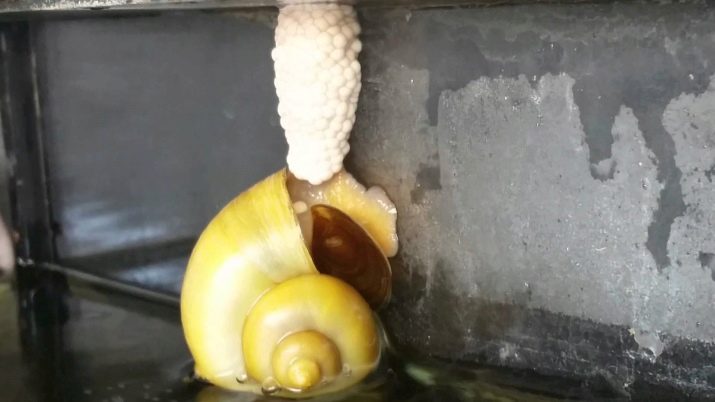
When the calves inside the eggs develop sufficiently, they will gnaw at their confinement and fall into the water. Some aquarists take measures in advance to preserve offspring. For example, noticing that the female has laid eggs, they substitute half of the plastic bottle on this section - and then the hatching snails will fall into the container and be saved from the voracious fish.
It is necessary to control the number of ampoulessince these snails are fertile and can quickly fill the entire aquarium. A large number of mollusks will soon destroy all green spaces.
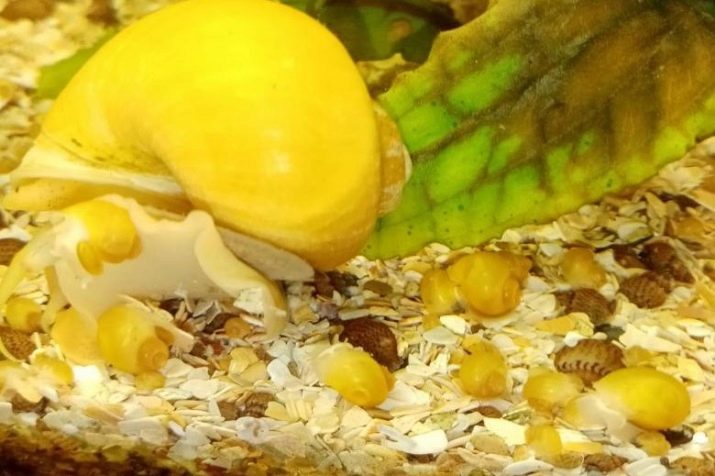
It is better to grow cubs in a separate seedling. In this case, the owner will be able to control the growing process and more accurately calculate the portion of feed.
The initial food can be grated daphnia, gammarus, fish food, yolk, squid. Next, the kids are transferred to a shredded tubifex, coronet, bloodworm. You can offer greens, but do not forget to scald it with water. Remove all half-eaten food so that they do not contaminate the water. Do additional aeration of water several times a day, and change all water once every three days. Kids grow up quickly, soon they can be returned to the general aquarium.

Possible problems
With illiterate care, a snail may have health problems - she herself will let you know about this. For example, noticing that the shell is destroyed in the ampullarium, it can be assumed that the aquarium water has too high softness indicators and the snail lacks calcium. To solve the problem, you can add a special agent to the artificial reservoir or put limestone on the bottom.
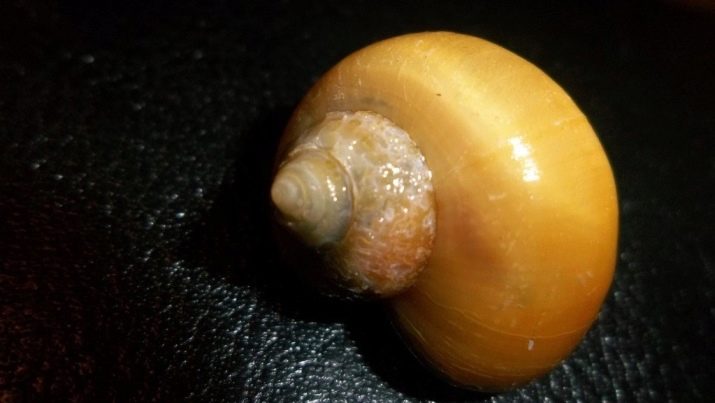
Sea shells can also serve as a source of calcium.
Some owners are scared when they see a snail floating on the surface of the water. However, this is normal for a mollusk. Ampouleria has both gills and lungs, sometimes it needs oxygen, for which it rises to the surface. So that the snail always has access to fresh air, it is important when adding water to the aquarium to leave an air gap between the surface and the lid.
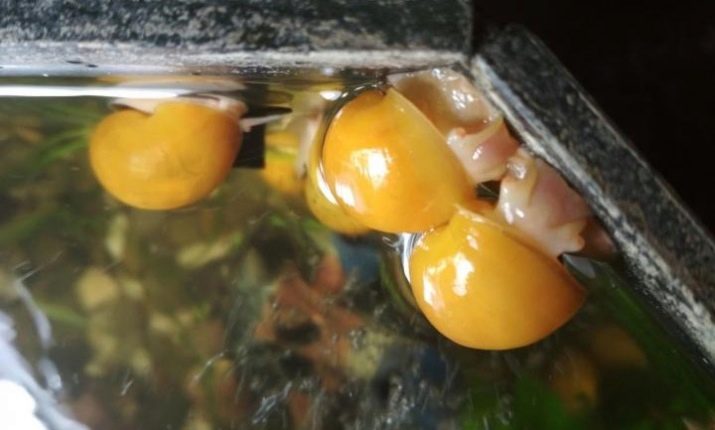
On the propagation of ampullar, see the video below.
